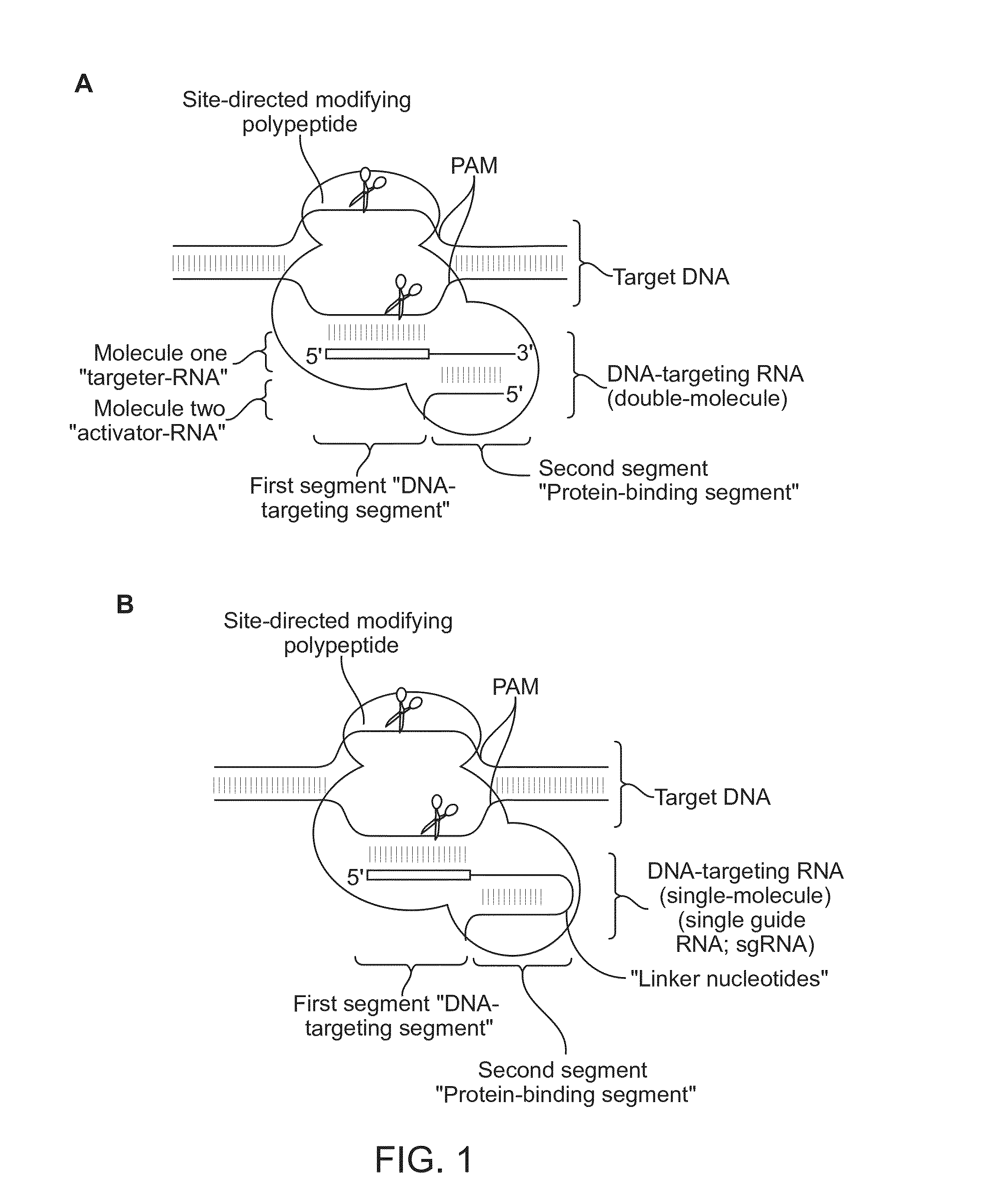Today is DNA Day, and to honor the occasion, we present a newly issued patent utilizing deoxyribonucleic acid, or DNA.
U.S. Patent No. 10,227,611 B2 (‘611) issued on March 12, 2019, for “Methods and Compositions for RNA-Directed Target DNA Modification and for RNA-Directed Modulation of Transcription.” It was issued to inventors Jennifer A. Doudna and Martin Jinek of Berkeley, California, Krzysztof Chylinski, of Vienna, Austria, and Emmanuelle Charpentier of Braunschweig, Germany. The applicants/assignees are The Regents of the University of California, University of Vienna, and Emmanuelle Charpentier. The specification describes a process for site-specific modification of a target DNA or polypeptide. Further, it describes the process of modulating transcription of Cas9 protein and a DNA-targeting RNA. The disclosure, notable because of its 242 page length, which includes 13 claims and 128 drawings (but not including the 1,424-sequence sequence listing filed in the application). The ‘611 claims are directed to the methods of targeting the DNA comprising the Cas9 protein and the single molecule DNA-targeting RNA.
Figure 1A-1B illustrate the general gene editing process of CRISPR-Cas 9.

The Cooperative Patent Classifications are C12N (microorganisms or enzymes and compositions thereof, namely, stable introduction of foreign DNA into chromosome using homologous recombination in mammalian cells); A01H (new plants or processes for obtaining them, namely, using gramineae or poaceae); A01K (new breeds of animals, namely new breeds of vertebrates); and A61K (preparations for medical, dental, or toilet purposes, namely medical preparations containing peptides hydrolases acting on ester bonds).
The CRISPR-Cas9 technology is revolutionary genome editing first uncovered in 2005, but demonstrated for the first time in 2017 by two Japanese researchers. Patent work was focused around two separate research teams, one around the U.C. and Dr. Charpentier, and the other in the Broad Institute and MIT. These two teams have been parties to recent litigation both at the PTAB and in the federal courts, with the recent case being the subject of a blog posting.[1] That case resulted in a stalemate between the two groups, and the patents-at-issue were found not invalid, paving the way for the two teams to pursue their own licensing regimes on the CRISPR-Cas9 technology. This technology has also been subject to recent controversy resulting from a Chinese researcher’s claim he gene edited two babies using the CRISPR-Cas9 technology. That researcher, Dr. He Jiankui, could not substantiate his claim with any peer-reviewed documentation. The Chinese government has condemned Dr. Jiankui’s research, and emphasized its in vitro fertilization regulations are still in place preventing such CRISPR technology on humans. CRISPR, while fascinating, does present bioethical issues that have yet to be fully explored. Certainly, more research into this area will need to be developed. Any additional information will be updated on the blog.
[1] See Regents of Univ. of Calif. v. Broad Inst., 903 F.3d 1286 (Fed. Cir. 2018).
